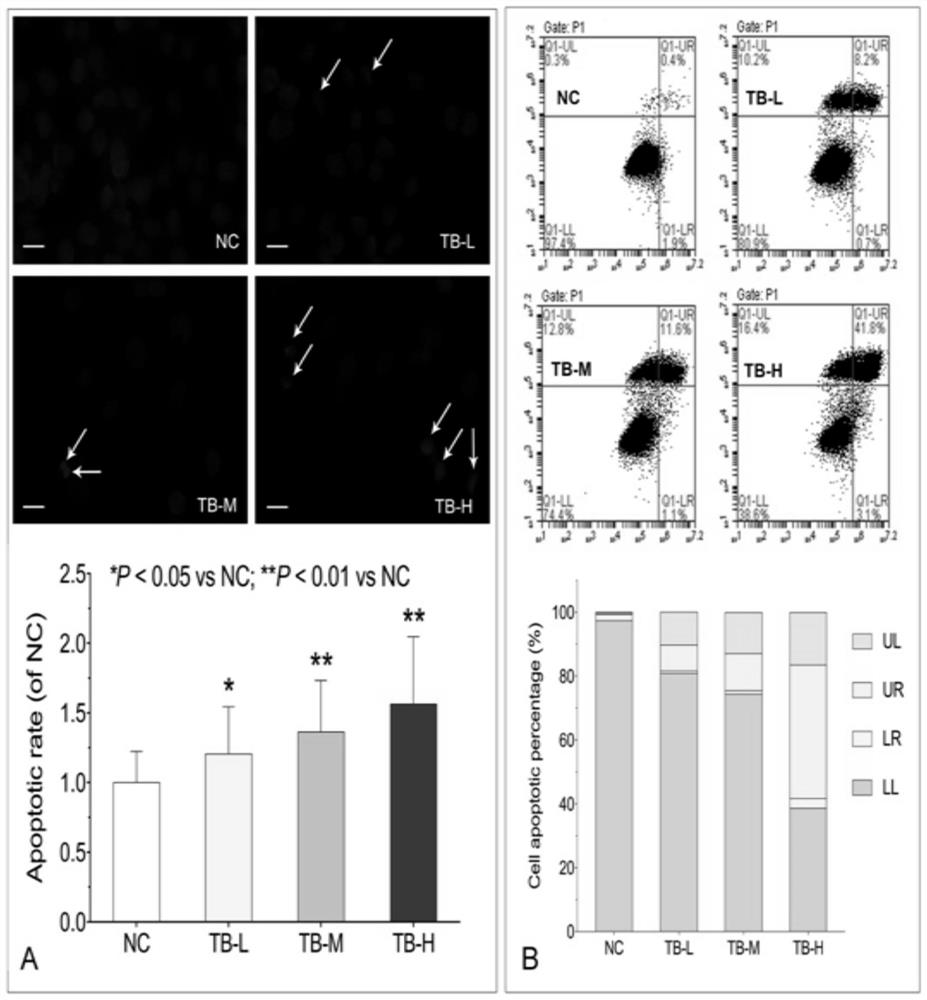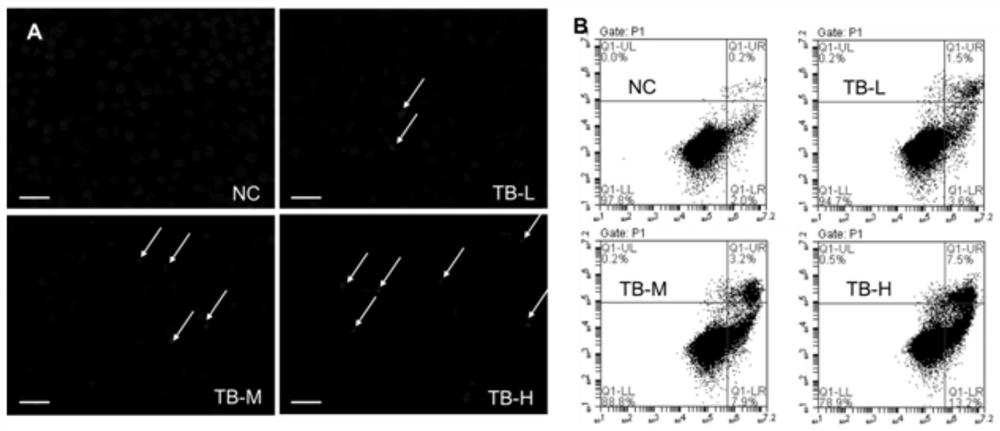Application of theabrownin to preparation of medicine for treating liver cancer
A technology for the treatment of liver cancer and theabrownin, applied in drug combinations, antineoplastic drugs, pharmaceutical formulations, etc., can solve the problems of unclear mechanism of action and its impact, and achieve the effect of inhibiting tumor growth and promoting apoptosis
- Summary
- Abstract
- Description
- Claims
- Application Information
AI Technical Summary
Problems solved by technology
Method used
Image
Examples
Embodiment 1
[0024] Example 1: Effect of theabrownin on the proliferation of Huh7 cells
[0025] HepG2, SK-hep1, and Huh7 cells were treated with theabrownin, and the cell viability after 24 and 48 hours was observed. cells in 8 x 10 3 Cells / well were seeded on a 96-well plate and cultured in 200 µl medium for 24 hours. Add 200µl of theabrownin at different concentrations, culture in the incubator for 24 hours and 48 hours respectively, suck off the supernatant, add 20µl of MTT solution (5.0mg / ml) to each well and incubate at 37°C for 4 Hour. Carefully suck out the culture medium in the wells, then add 150 µl DMSO to each well, shake on a shaker at low speed for 10 minutes to fully dissolve the crystals, and measure the optical density (OD) value at 490 nm with a microplate reader. Inhibition rate (IR, %)=[1−(theabrownin treated OD / untreated OD)]*100%. 100 mg / ml, 200 mg / ml and 300 mg / ml were used as the low, medium and high doses of theabrownin for the next experiment.
[0026] The re...
Embodiment 2
[0027] Example 2: Effect of theabrownin on apoptosis of Huh7 cells
[0028] DAPI staining and flow cytometry were used to observe the apoptosis morphology of Huh7 cells after theabrownin treatment. cells in 8 x 10 3 The density of each well was inoculated on a 24-well plate, and treated with low, medium, and high doses of theabrownin for 24 hours, and the control group was added with a culture medium without theabrownin, and cultured for 24 hours. Cells were fixed with 4% paraformaldehyde for 30 minutes at room temperature, and washed with PBS buffer solution for 3 times, 5 minutes each time. Permeabilize with PBS containing 0.5% Triton-X-100 at room temperature for 30 minutes, choose PBS buffer solution to wash 3 times, 5 minutes each time. Add DAPI staining solution for 4 minutes at room temperature, choose PBS buffer solution to wash 3 times, 5 minutes each time. Unstained and stained cells were observed using a fluorescence microscope. Five funnels in each group were u...
Embodiment 3
[0031] Example 3: Effect of theabrownin on apoptosis of SK-hep1 cells
[0032]DAPI staining and flow cytometry were used to observe the apoptotic morphology of SK-hep1 cells after theabrownin treatment.
[0033] The result is as image 3 As shown in A, with the increase of theabrownin concentration, more and more apoptotic cells appeared chromatin condensation, nuclear pyknosis and apoptotic bodies (arrows). like image 3 As shown in B, as the concentration of theabrownin increased, the early and late apoptosis rates of SK-hep1 cells increased significantly, indicating that theabrownin induced apoptosis of SK-hep1 cells in a dose-dependent manner.
PUM
 Login to View More
Login to View More Abstract
Description
Claims
Application Information
 Login to View More
Login to View More - R&D
- Intellectual Property
- Life Sciences
- Materials
- Tech Scout
- Unparalleled Data Quality
- Higher Quality Content
- 60% Fewer Hallucinations
Browse by: Latest US Patents, China's latest patents, Technical Efficacy Thesaurus, Application Domain, Technology Topic, Popular Technical Reports.
© 2025 PatSnap. All rights reserved.Legal|Privacy policy|Modern Slavery Act Transparency Statement|Sitemap|About US| Contact US: help@patsnap.com



